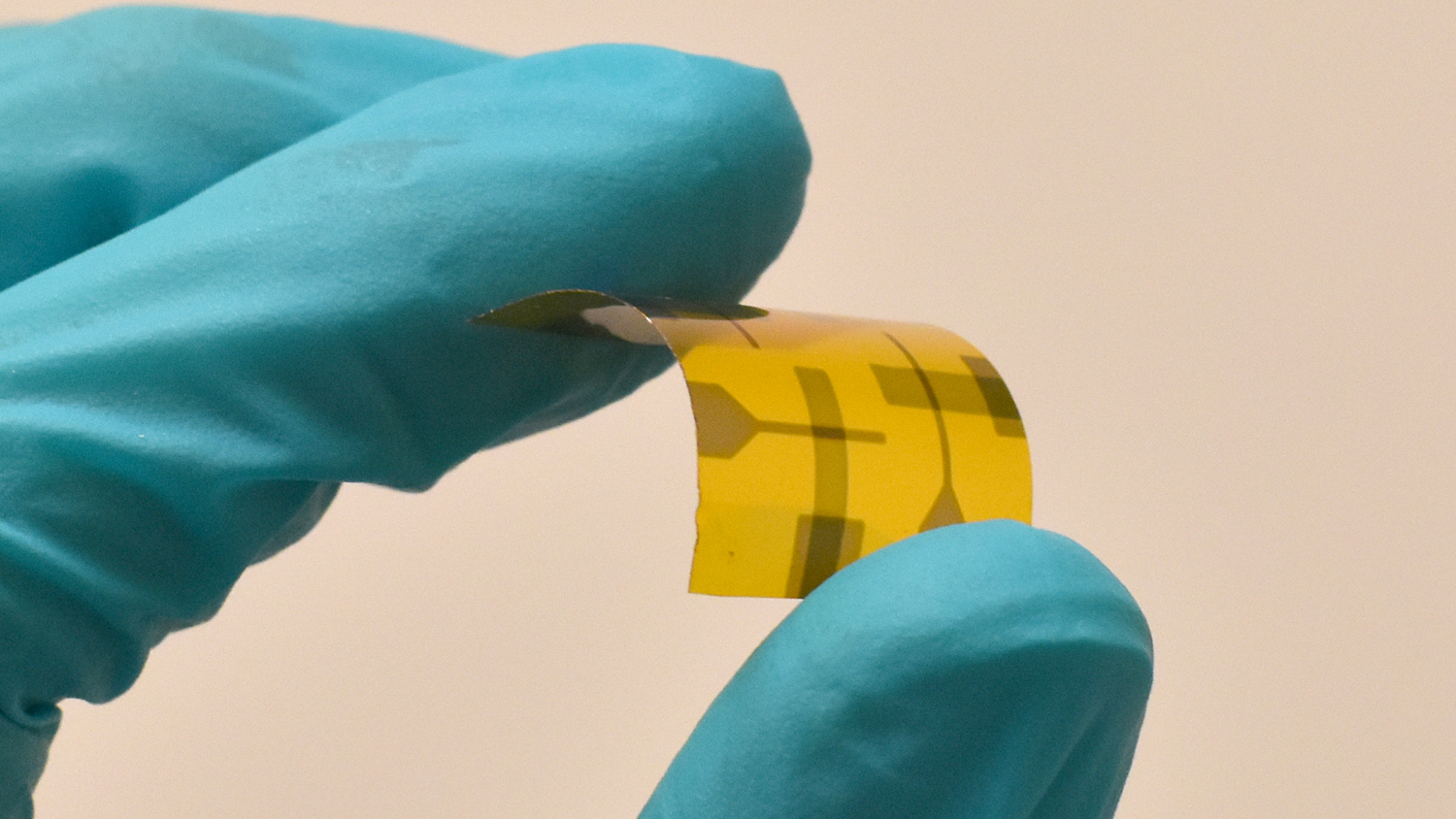Researchers Make the First Flexible Memory Device Using Oxide Ferroelectric Material

For Immediate Release
For the first time, researchers have been able to deposit an ultra-thin oxide ferroelectric film onto a flexible polymer substrate. The research team used the flexible ferroelectric thin films to make non-volatile memory devices that are wearable and resilient.
“Ferroelectric materials are capable of storing charge, which makes them ideal for non-volatile memory devices,” says Jacob Jones, a professor of materials science and engineering at North Carolina State University and co-author of a paper on the work. “But ferroelectric materials tend to be brittle, and normally have to be made at high temperatures – which would destroy most polymers. We’ve now found a way to make an extremely thin film of ferroelectric material that can be made at low temperatures.”
“What is most exciting about this work is the ability to make ferroelectric thin films at low temperatures and integrate them with carbon-based organic semiconductors to make highly flexible memory devices,” says Franky So, the corresponding author of the paper and Walter and Ida Freeman Distinguished Professor of Materials Science and Engineering at NC State.
“The key to success of this work is the special technique we developed to make these ferroelectric thin films at low temperature and maintain the flexibility,” says Hyeonggeun Yu, a postdoctoral researcher at NC State and lead author of the paper. “We have created a new device platform which can integrate these memory devices with other flexible electronic circuits.”
“This advance allowed us to create a pliable ferroelectric that can be used to create stable memory storage units for use in energy-efficient electronic applications for use in everything from space exploration to defense applications,” says Ching-Chang Chung, a postdoctoral researcher at NC State and co-author of the paper.
The researchers worked with hafnium oxide, or hafnia, a material that has ferroelectric properties when applied as a thin film. And, for the first time, the researchers were able to show that the flexible hafnia thin films exhibited ferroelectric properties with thicknesses ranging from 20 nanometers (nm) to 50 nm.
“This is a milestone in nanotechnology,” So says.
“We made a low-voltage, non-volatile, vertical organic transistor using a hafnia thin film,” Jones says. “That level of detail may only be exciting for those in the electrical engineering field. For everyone else, that means this is a practical discovery with very real applications.”
“We’ve found that the prototype is fully functional and retains its functionality even when bent up to 1,000 times,” Chung says. “And we’re already working on what can be done to improve reliability when the material is bent more than 1,000 times.”
The paper, “Flexible Inorganic Ferroelectric Thin Films for Non-Volatile Memory Devices,” is published in the journal Advanced Functional Materials. Paper co-authors include Nate Shewmon, a postdoctoral researcher at NC State; Szuheng Ho, Joshua Carpenter and Tianlei Sun, Ph.D. students at NC State; Ryan Larrabee, an undergraduate student at NC State; Harald Ade, Distinguished Professor of Physics at NC State; and Brendan O’Connor, an assistant professor of mechanical and aerospace engineering at NC State.
The work was done with support from Nanoholdings LLC; the National Science Foundation, under grant number ECCS-1542015; the U.S. Army Research Office, under grant number W911NF-15-1-0593; and a Research Opportunity Grant from the University of North Carolina General Administration.
– shipman –
Note to Editors: The study abstract follows.
“Flexible Inorganic Ferroelectric Thin Films for Non-Volatile Memory Devices”
Authors: Hyeonggeun Yu, Ching-Chang Chung, Nate Shewmon, Szuheng Ho, Joshua H. Carpenter, Ryan Larrabee, Tianlei Sun, Jacob L. Jones, Harald Ade, Brendan T. O’Connor, and Franky So, North Carolina State University
Published: April 12, 2017 in Advanced Functional Materials
DOI: 10.1002/adfm.201700461
Abstract: Next-generation wearable electronics calls for flexible non-volatile devices for ubiquitous data storage. Thus far, only organic ferroelectric materials have shown intrinsic flexibility and processibility on plastic substrates. Here, we discovered that by controlling the heating rate, ferroelectric hafnia films can be grown on plastic substrates. The resulting highly flexible capacitor with a film thickness of 30 nm yielded a remnant polarization of 10 ?C/cm2. Bending test shows that the film ferroelectricity can be retained under a bending radius below 8 mm with bending cycle up to 1,000 times. The excellent flexibility is due to the extremely thin hafnia film thickness. Using the ferroelectric film as a gate insulator, a low voltage non-volatile vertical organic transistor was demonstrated on a plastic substrate with an extrapolated date retention time up to 10 years.
- Categories:


